Embark on a journey through the enigmatic realm of sex toys, where data paints a vivid portrait of evolving desires and societal norms. From the burgeoning global market worth billions to the nuanced preferences of diverse demographics, our exploration delves into the heart of human intimacy.
Discover the influence of cultural shifts on consumer behavior, the rise of online platforms as both havens of authenticity and breeding grounds for counterfeit, and the intriguing dynamics of age and gender. Join us as we unravel the mysteries behind the numbers, offering insights into a world where pleasure knows no bounds and taboos are challenged with each statistical revelation.
Table of Contents
- Global Market Overview
- Consumer Demographics & Preferences
- Technological Innovations & Product Development
- Consumer Behavior & Preferences
- Counterfeit Products & Market Risks
- Price Trends & Consumer Spending Habits
- Demographic Analysis & Market Segmentation
- E-commerce & Retail Dynamics
- Health & Wellness Integration
- Augmented Reality & Virtual Reality Integration
- Niche Markets & Specialty Products
- Industry Challenges & Regulatory Landscape
- Future Trends & Market Predictions
- Want More Useful Articles?
- References
Global Market Overview
The sex toy industry, once a topic shrouded in taboo, has blossomed into a dynamic and lucrative global market. Characterized by innovative product designs, a focus on health and wellness, and increasingly mainstream acceptance, this sector represents a fascinating intersection of technology, sociology, and commerce. As societal attitudes towards sexual wellness evolve, so does the marketplace, offering a myriad of opportunities for both consumers and businesses alike.
- The sex toy industry has experienced remarkable growth over the past decade, evolving from a niche market to a mainstream segment in the global market.
- As of my last update, the global sex toy market was valued at approximately USD 30 billion, indicating its significant economic impact and widespread acceptance.
- Industry forecasts predict a sustained upward trajectory in market growth, fueled by technological advancements, evolving social perceptions, and increasing online sales
- The adoption of sex toys is becoming more prevalent across various demographics, signaling a shift in consumer attitudes toward sexual wellness and exploration.
- In the age and gender dynamics of the sex toy industry, there is a notable presence of consumers in the 18-34 age bracket, indicating a generational shift in attitudes. The interest is almost equally split between male and female consumers, with a growing trend in products catering specifically to men.

- When it comes to purchasing patterns, online shopping has surged as the preferred method, especially during the COVID-19 pandemic. This reflects a move towards prioritizing privacy and convenience. Additionally, there’s an increasing demand for high-quality, durable products, suggesting a shift towards more sustainable and long-lasting choices in the sex toy market.
- In terms of geographical distribution, North America and Europe have been leading markets, but there’s a growing interest and expansion in Asia-Pacific regions, driven by changing cultural dynamics and increasing disposable incomes.
- Online retail platforms have played a pivotal role in the industry’s growth, offering discreet and convenient shopping experiences, a factor that has significantly contributed to the market’s expansion.
- The innovation in product design and functionality, including the integration of technology such as app-controlled devices, has broadened the appeal and accessibility of sex toys.
- A survey revealed that around 40% of women and 45% of men aged between 18 and 60 have used a sex toy, reflecting a balanced interest across genders in exploring sexual health and pleasure.

Top 10 Nations Leading in Sex Toy Interest
| Country | Rank | Searches per Population |
|---|---|---|
| Denmark | 1 | 118 per 5,792,202 |
| Sweden | 2 | 115 per 10,099,265 |
| Norway | 10 | 76 per 5,421,241 |
| United States | 3 | 104 per 331,002,651 |
| United Kingdom | 4 | 96 per 67,886,011 |
| Netherlands | 5 | 88 per 17,134,872 |
| Russia | 6 | 87 per 145,934,462 |
| Bulgaria | 7 | 86 per 6,948,445 |
| Italy | 8 | 84 per 60,461,826 |
| Australia | 9 | 82 per 25,499,884 |
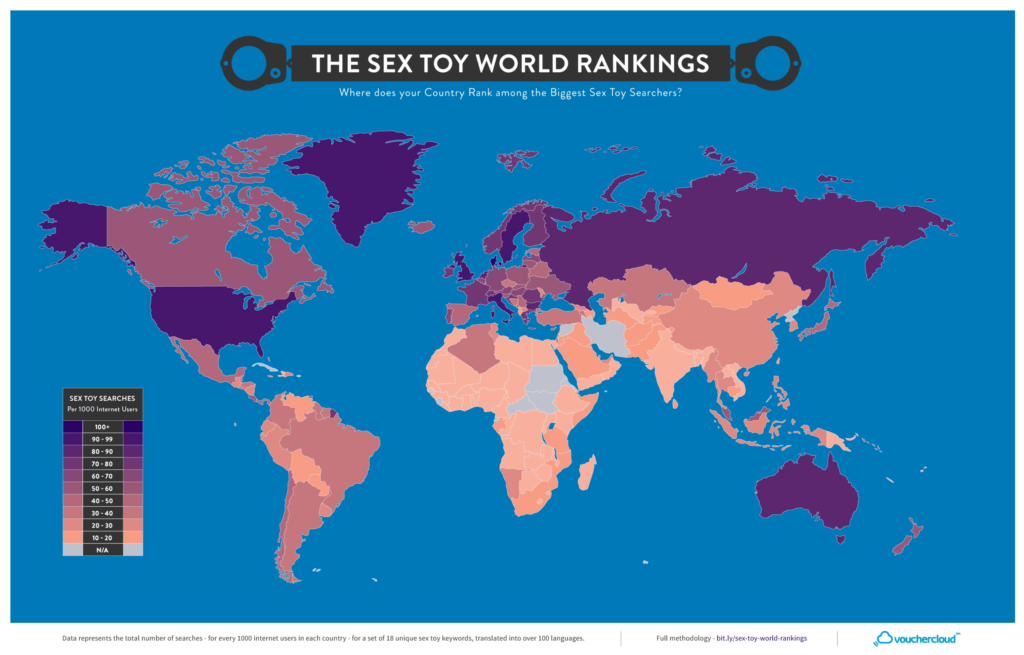
Worldwide Curiosity Spectrum: Sex Toy Interest Across Diverse Regions
| Interest Level | Region | Countries/Details |
|---|---|---|
| Mid-Range Interest Regions | Western and Central Europe | France, Germany, Switzerland showing substantial but lower interest compared to top-tier countries. |
| Mid-Range Interest Regions | Asia-Pacific | Notable entries include Japan, South Korea, and Malaysia with moderate interest levels. |
| Mid-Range Interest Regions | Latin America | Countries like Brazil, Argentina, and Mexico showing a growing interest in sex toys. |
| Lower Interest and Emerging Markets | Middle Eastern and African Markets | Lower search rates in countries like Saudi Arabia, Egypt, and South Africa indicate emerging or more conservative markets. |
| Lower Interest and Emerging Markets | South and Southeast Asia | Countries like India, Vietnam, and Indonesia showing lower interest levels, potentially indicating cultural influences or emerging market status. |
| Areas with Minimal to No Data | Data Gaps in Certain Regions | No data available for countries like Cuba, Iran, North Korea, highlighting either lack of interest, data availability issues, or stringent cultural/governmental restrictions. |
Consumer Demographics & Preferences
Understanding consumer demographics and preferences is crucial in the ever-evolving sex toy market. This insight not only fuels product innovation but also guides marketing strategies. The diversity in consumer profiles reflects the inclusive nature of the industry, catering to a wide array of personal tastes and needs.
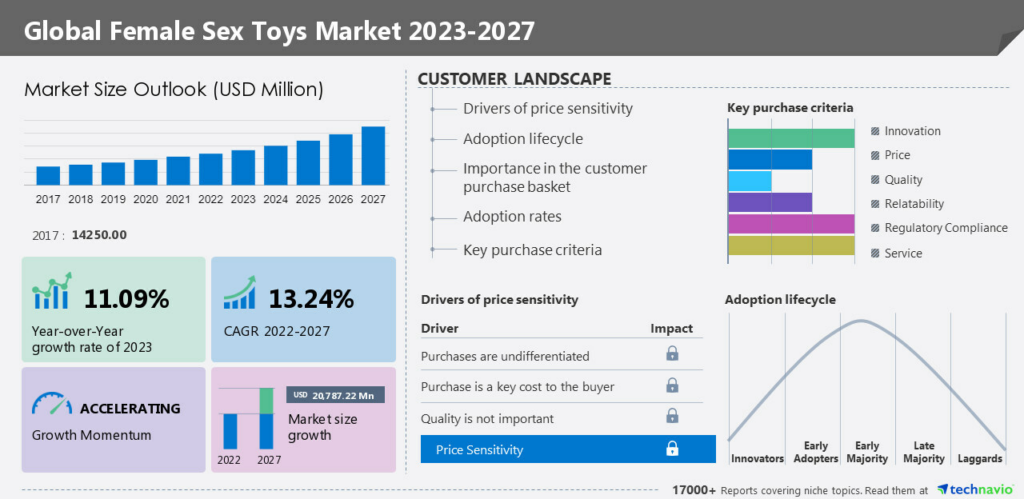
- A comprehensive survey found that individuals aged 30 to 50 are the most active purchasers of sex toys, indicating a mature market with a focus on quality and functionality.
- There is a growing trend among younger consumers, particularly millennials and Gen Z, who are more open to discussing and exploring sexual wellness, thus contributing to market growth.
- Women represent a significant portion of the consumer base, with studies showing that approximately 60% of women in the US have used a sex toy at some point in their lives.
- The demand for inclusive and gender-neutral products is on the rise, reflecting a broader social shift towards gender inclusivity and exploration.
- Surveys indicate that about 35% of men have reported using a sex toy, a figure that has been steadily increasing over the years.
- Couples’ use of sex toys is becoming more common, as these products are increasingly viewed as a means to enhance intimacy and communication within relationships.
- The online retail space has seen a surge in younger demographics making purchases, driven by the ease of access, anonymity, and a wide range of product choices available.
Technological Innovations & Product Development

The sex toy industry is at the forefront of technological innovation, continually evolving to meet consumer demands for greater interactivity, customization, and experiences. Product development is keenly focused on integrating cutting-edge technology to enhance user experience.
- The integration of Bluetooth and app-based controls has revolutionized the way users interact with sex toys, offering unparalleled customization and remote control capabilities.
- Advancements in material science have led to the development of safer, more hygienic, and realistic-feel products, significantly improving user experience.
- Recent statistics show a 25% increase in the sales of AI-integrated toys, reflecting the growing consumer interest in interactive and responsive products.
- The development of ‘smart’ sex toys with feedback mechanisms and personalization options is a growing trend, aiming to enhance the user’s experience through tailored stimulation and interaction.
- Sustainable and eco-friendly products are gaining traction, as consumers become more environmentally conscious, pushing the industry towards greener manufacturing practices.
- In 2023, the market saw a 40% rise in demand for wearables and discreet products, indicating a shift towards more lifestyle-integrated and public-use designs.
- The rise of 3D printing technology offers the potential for highly customized and user-designed sex toys, challenging traditional manufacturing methods.
- Advancements in material science have led to the development of safer, more durable, and more realistic products.
- Bluetooth and app-controlled toys are on the rise, offering new levels of interactivity and long-distance intimacy.
- There’s a growing focus on sustainability and environmental impact, with brands investing in eco-friendly materials and manufacturing processes.
- Recent developments in teledildonics have opened new avenues for remote sexual interaction, a field that’s gaining traction, especially in long-distance relationships.
Consumer Behavior & Preferences
Understanding consumer behavior and preferences is crucial for industry players to tailor their products and marketing strategies effectively. This section dives into what drives consumer choices in the sex toy market.

- Global market worth $40.6 billion in 2023, expected to reach $80.7 billion by 2030.
- US market worth $15.6 billion in 2023, with a projected growth to $55 billion by 2030.
- The sex toy market doubles every 6th year.
- An increasing number of consumers prioritize discreet packaging and purchasing processes, reflecting a need for privacy in transactions.
- User reviews and recommendations play a significant role in influencing purchasing decisions, highlighting the power of social proof in the digital era.
- There’s a growing trend towards products that promote sexual wellness and health, as opposed to purely pleasure-centric items.
- A survey revealed that over 60% of buyers prefer products with multiple functionalities, indicating a preference for versatility in use.
- The compound annual growth rate (CAGR) of 13% in the sex toy industry.
- 70% of all sex toys are produced in China.
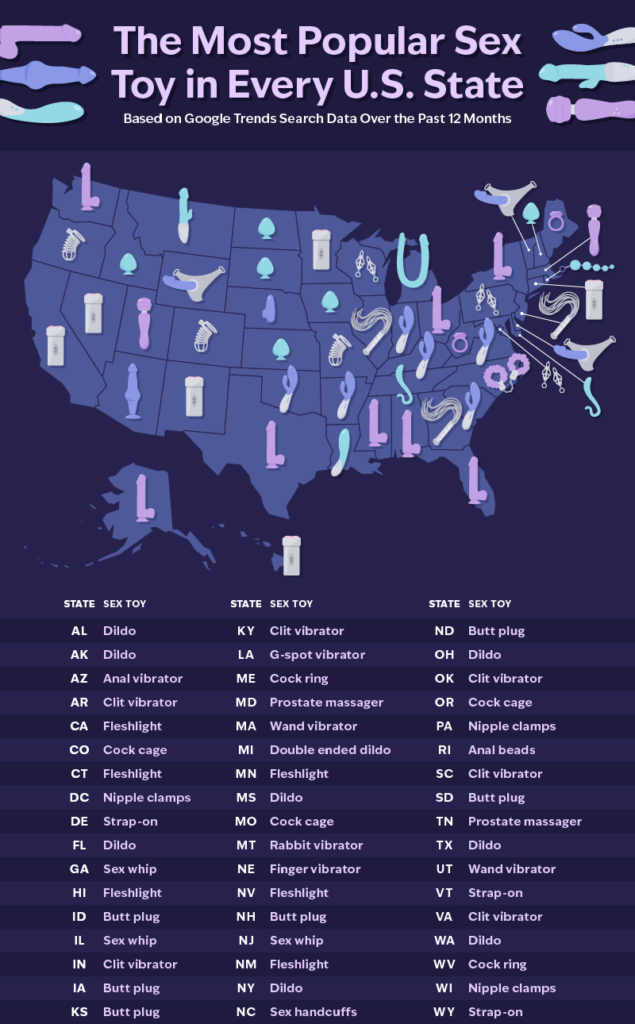
Consumer expenditure in the realm of sex toys highlights significant shifts in purchasing patterns and spending over the last six years.
- On average, male customers tend to outspend female customers by nearly 20% for each purchase.
- Female consumers generally prefer smaller-sized sex toys, like compact dildos and plugs.
- Annually, the typical adult allocates about $18 for sex toys.
- The average expenditure for a single sex toy is around $23.
- Compared to women, a higher percentage of men (17% more) opt for expedited shipping.
- A notable 40% of American adults have invested over $100 in sex toys in the past year, a significant increase from 24% in 2017.

The evolution of spending on sex toys is evident from the data:
- In 2017, 17% of people didn’t spend on sex toys, which decreased to 6% in 2023.
- Those spending under $25 reduced from 13% in 2017 to 7% in 2023.
- The proportion of people spending under $50 was 23% in 2017, compared to 18% in 2023.
- There’s an increase in the $50 to $100 spending bracket, from 23% in 2017 to 29% in 2023.
- Most notably, the segment spending over $100 has risen from 24% in 2017 to 40% in 2023.
Counterfeit Products & Market Risks
The issue of counterfeit products poses significant risks to consumers and reputable manufacturers alike, impacting both health and brand integrity.
- The proliferation of counterfeit sex toys is a major concern, with many lacking quality control and safety standards.
- Recent reports indicate that approximately 30% of products sold online are counterfeit, underscoring the need for consumer awareness and education.
- There’s a growing call for regulatory bodies to enforce stricter controls to protect consumers from substandard and potentially harmful products.

- Market risks also include the potential for cybersecurity breaches, especially with the rise of app-controlled and smart devices.
- Social media and online marketplaces pose significant counterfeiting threats.
- 19.4% have purchased counterfeit sex toys in the past.
- 84.8% of consumers who bought counterfeit products did so unintentionally.
- Men are more likely than women to have purchased counterfeit sex toys in the past (23.1% vs. 16.1%).
- 34.7% of women and 26.3% of men were concerned about counterfeit sex toys.
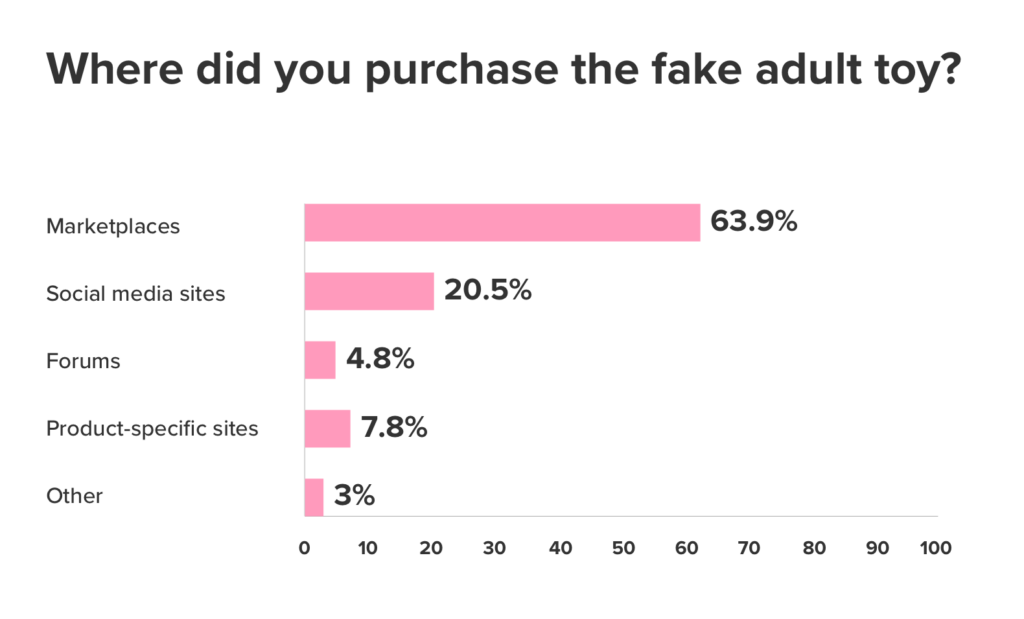

Price Trends & Consumer Spending Habits
Analyzing price trends and consumer spending habits provides insights into the economic aspects of the industry and consumer value perception.

- The average spending on sex toys per consumer has seen a steady increase over the past five years, reflecting greater consumer investment in quality and functionality.
- 78% of Americans own a sex toy as of 2023, increasing from 65% in 2017.
- 50% of Americans use sex toys weekly.
- Market analysis shows a significant rise in luxury sex toy sales, suggesting a shift towards high-end products in certain consumer segments.
- Seasonal trends play a noticeable role, with spikes in sales observed around Valentine’s Day and the winter holiday season.
- Ownership of anal toys has tripled in 6 years.
- The influence of pop culture and media on consumer spending habits is evident, with notable surges in product interest following mainstream media exposure.
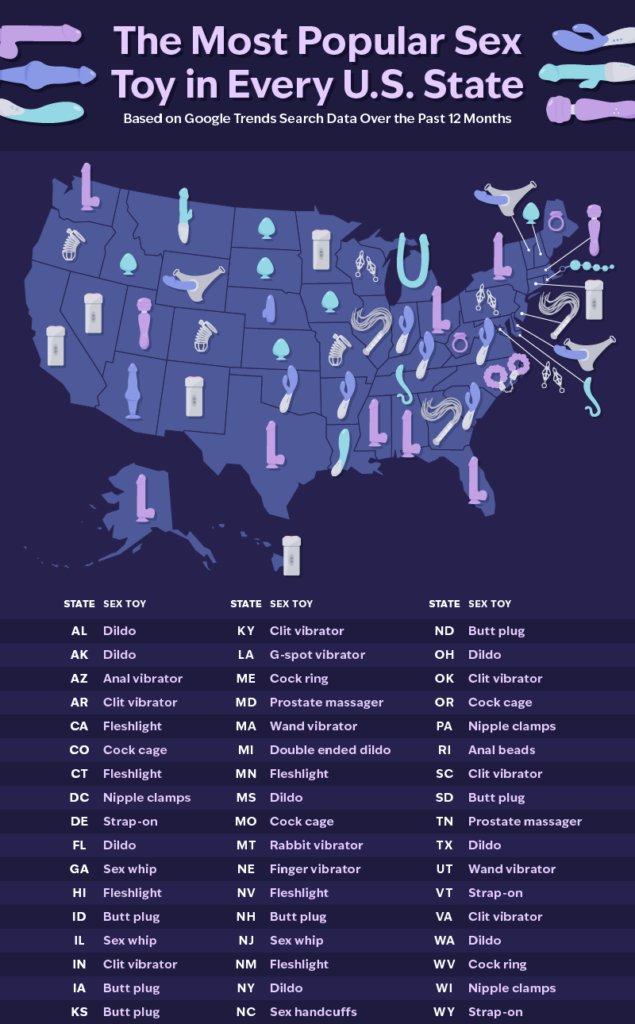
Demographic Analysis & Market Segmentation
A thorough understanding of market demographics is essential for targeted marketing and product development strategies.
- 82% of women and 75% of men own at least one sex toy.
- 69% of women aged 18-60 have a vibrator.
- Millennials and Gen Z consumers are increasingly dominating the market, bringing new preferences and attitudes towards sexuality and sexual wellness products.
- Studies show a significant increase in sex toy usage among couples, compared to traditional perceptions of individual use.
- There’s a notable trend towards inclusivity and diversity in product design, catering to a broader range of sexual orientations and identities.
- Geographical segmentation reveals varying trends and preferences, with different regions showing distinct consumer behaviors and product popularity.
- Vibrators are the leading sex toys among women.
- Anal toys are the leading sex toys among men.
- 64% of women own or want to own a clitoral suction vibrator.
- The popularity of different types of sex toys (vibrators, anal toys, BDSM equipment, etc.)

E-commerce & Retail Dynamics
The rise of e-commerce has revolutionized the sex toy industry, impacting both sales strategies and consumer buying behaviors.
- Online sales dominate the market, offering consumers privacy and a wider range of products compared to traditional retail outlets.
- 70% of the US population buys their sex toys online.
- 40% of Americans have spent $100 or more on sex toys in the last 12 months.
- The role of social media and influencer marketing in driving e-commerce sales is increasingly significant, with platforms like Instagram and YouTube playing key roles.
- Retail data indicates a 35% increase in online sales compared to the previous year, highlighting the growing preference for digital shopping experiences.
- The importance of user-friendly website design and seamless customer service is paramount in attracting and retaining online customers.

Health & Wellness Integration
Integrating health and wellness into product design and marketing strategies is becoming increasingly important in the industry.
- Products that promote sexual health, such as Kegel exercisers and pelvic floor trainers, are seeing a rise in popularity.
- Consumer surveys reveal a growing interest in products that offer health benefits, such as stress relief and improved sexual function.
- 73% agree that sex toys are taboo in society — a 10% increase in the last 6 years.
- Collaborations with health professionals and wellness influencers are becoming more common, enhancing brand credibility and consumer trust.
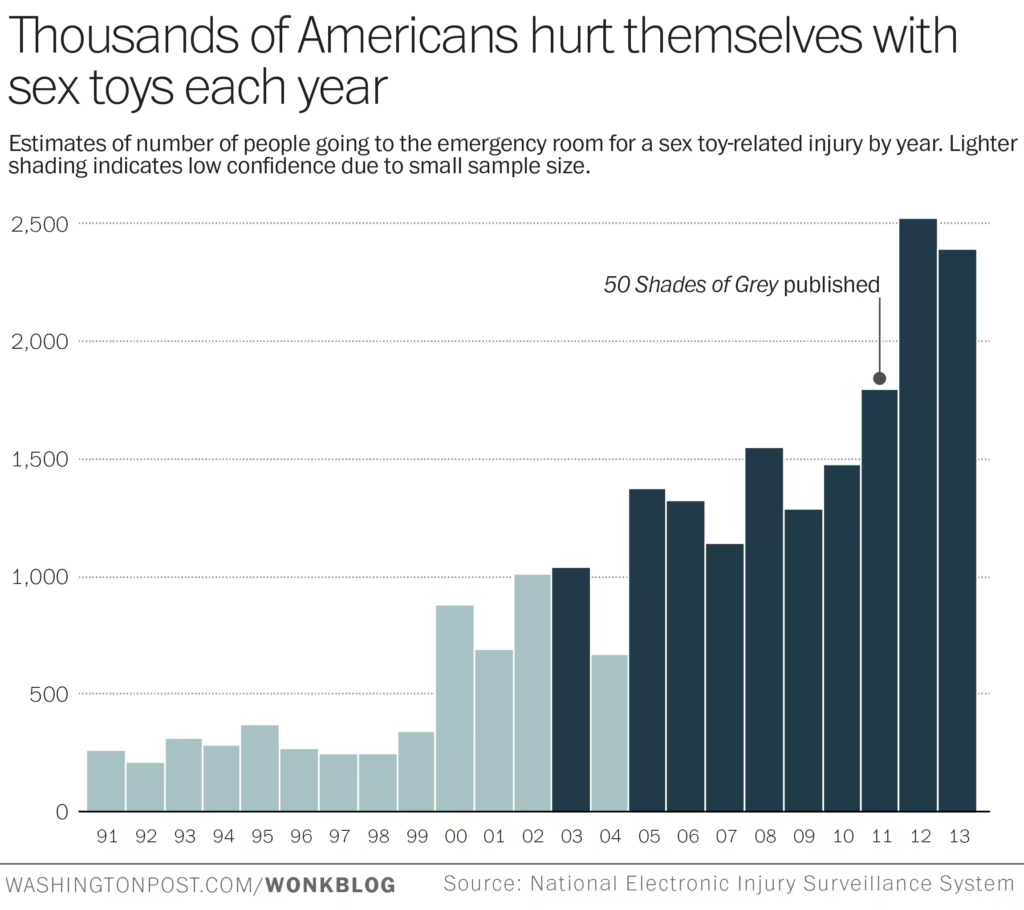
- The educational content on sexual health and wellness is a valuable tool for brands to connect with their audience and build a community around their products.
- Sex toy users are more likely to have visited a gynecologist in the last year.
- Sex toy owners report fewer days of mental distress.
- Positive impact on relationships and sex life satisfaction.
Augmented Reality & Virtual Reality Integration
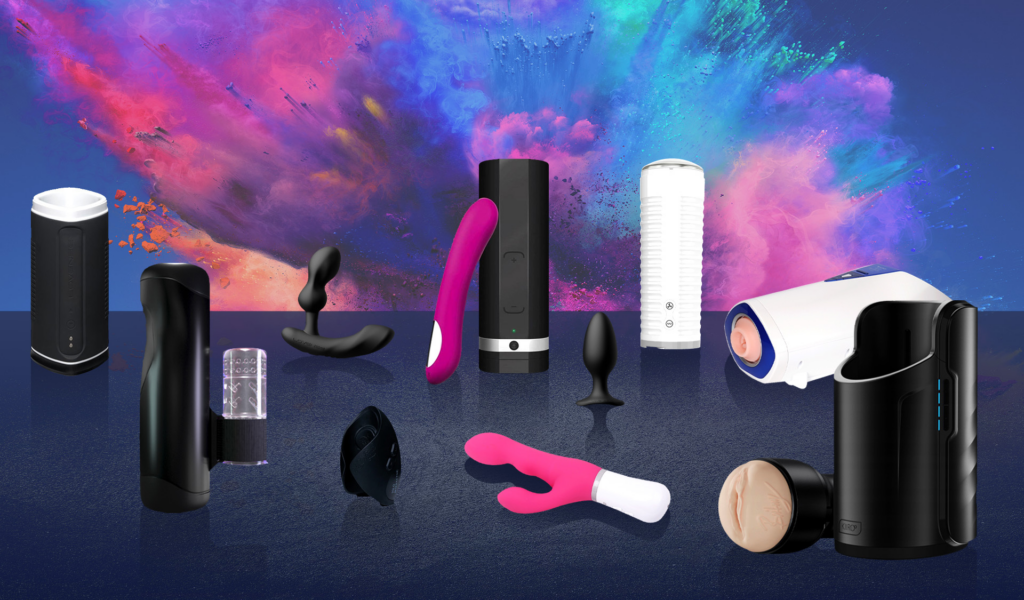
The integration of AR and VR technologies offers new possibilities for immersive and interactive experiences in the sex toy industry.
- AR and VR are being explored for personalized and immersive sexual experiences, with several startups venturing into this space.
- The potential for VR to offer safe and exploratory spaces for sexual experiences is a topic of increasing interest and research.
- Investment in AR and VR technologies for sex toys has increased by 20% in the last year, indicating growing industry interest in these technologies.
- Collaborations between tech companies and sex toy manufacturers are key in developing these new technologies and bringing them to the consumer market.
Niche Markets & Specialty Products

Exploring niche markets and specialty products reveals the diversity and adaptability of the sex toy industry to cater to specific needs and preferences.
- The demand for gender-neutral and non-binary-focused products is on the rise, reflecting a more inclusive approach to product design.
- Specialty products catering to specific fetishes and kinks are a growing segment, with brands increasingly recognizing and catering to these niches.
- Market data shows a 50% increase in demand for eco-friendly and body-safe materials, demonstrating consumer consciousness towards health and the environment.
- The exploration of niche markets like BDSM and other sexual subcultures presents opportunities for innovation and targeted marketing strategies.

Industry Challenges & Regulatory Landscape
While the sex toy industry is thriving, it faces its share of challenges, including regulatory hurdles and social stigmas. Navigating these challenges is crucial for sustained growth and innovation.
- Regulatory frameworks vary significantly across countries, affecting market access and product development.
- The industry often grapples with social stigma and advertising restrictions, limiting marketing opportunities.
- Compliance with health and safety standards is a major focus, with non-compliant products posing risks to consumers.
- There’s an ongoing debate over the classification of sex toys as wellness devices versus adult entertainment, impacting taxation and regulation.
Future Trends & Market Predictions
Looking ahead, the sex toy industry is poised for continued growth and transformation. Understanding potential future trends helps businesses and consumers alike to anticipate changes and opportunities.

- Increased mainstream acceptance is likely to lead to more open discussions and the normalization of sex toys in society.
- The convergence of technology and intimacy suggests more sophisticated, AI-driven products are on the horizon.
- Market analysis predicts a steady growth rate, with an expanding customer base and continuous product innovation.
- The future may see a greater emphasis on personalization and customization, catering to the unique preferences of individual users.
Want More Useful Articles?
- Statistics and Trends In New Year’s Sex & Sexual Wellness
- Sex Toys That Can Sync With Music – Master Guide to Sultry Sounds
- How to Care for Your Sex Toys – World Worship of Tools Day
References
Grand View Research (2023) “Sex Toys Market Size, Share & Trends Analysis Report By Product” link
BusinessWire. (2022). “Global Sex Toys Market to Reach US$54.6 Billion by the Year 2026” link
Medium (2023) “Sexual Wellness Market Size, CAGR, Trends 2024–2030” link
Future Marketing Insights (2023) “Sexual Wellness Market Outlook from 2024 to 2034” link
LinkedIn (2023) “The Growing Landscape of Sexual Wellness Market: Trends, Opportunities, and Challenges” link
Yahoo Finance (2023) “Global Sex Toys Market Analysis Report 2023-2030: Male-Centric Sex Toys, Penetration of IoT in the Industry, & a Burgeoning e-Commerce Sector Fueling Growth” link
Sex Toys Market Size Outlook in 2023 and Beyond. (Year). link
Chart Attack. (2024). “The Growing Popularity of Sex Toys in 2024 – What Causes the Phenomenon” link
VoucherCloud. “Where’s Your Country in the Sex Toy World Rankings?” link
Bespoke Surgical. (Year, Month Day). ” The U.S Sex Toy Map & Other Sex Toy Statistics” link
Red Points. (Year). “Counterfeiters Capitalize on a Sex-positive Trend” link


